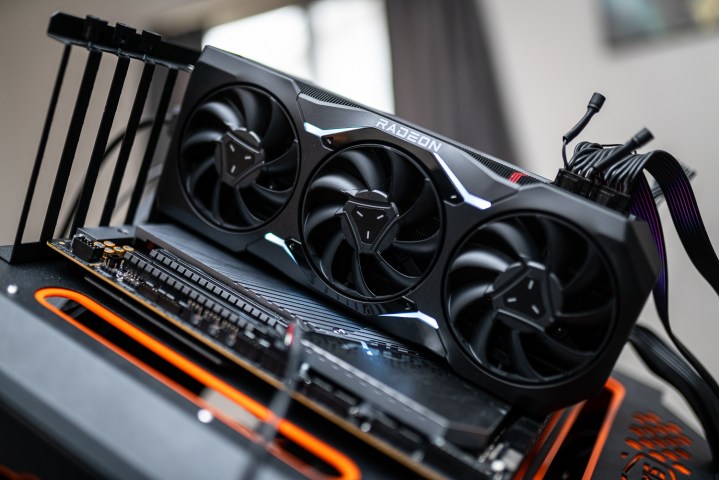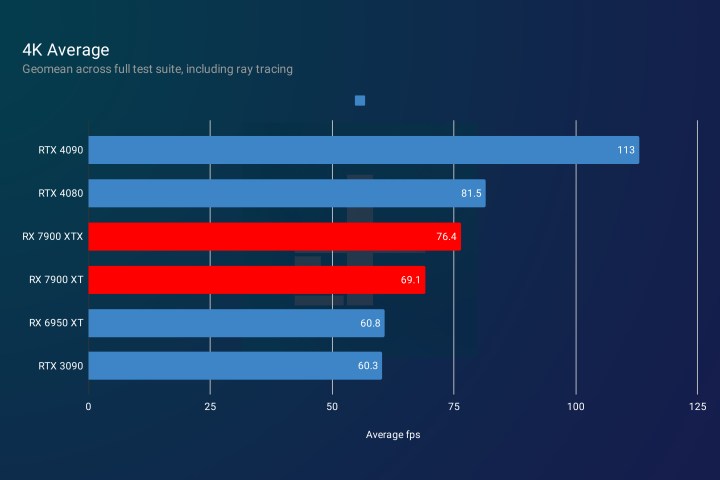In my next PC build, I really wanted to give AMD a proper try once again. Unfortunately, Team Red is not making it easy for me to give up Nvidia, and I say that as a person who is very much disillusioned with Nvidia’s current strategy of GPU releases.
I had high expectations for AMD in this generation of graphics cards. Was I too hopeful, or is AMD simply content with taking a back seat?
The competition is really not that fierce

AMD, Intel, Nvidia — most of us have some sort of a preference. I’ve been there, too, as I used to favor Nvidia, due to having a poor experience with AMD years ago. These days, I’d like to say I’m pretty neutral, or at least I try to be. I play around with different builds fairly often and I’m not afraid to say that AMD is a solid choice for many budgets and use cases.
To be fair, buying a GPU in 2023 isn’t easy. Nvidia makes solid GPUs, but this generation has been … weird. The price versus performance just doesn’t add up for me. I’m of the opinion that a new generation of hardware should either offer a marked increase in performance at a reasonable increase in price, or at least a mild increase at the same or a slightly higher price.
Nvidia’s Ada Lovelace generation definitely challenges that mindset for me. With GPUs that are expensive and often not that much better, only a couple of models stand out as decent value, and one of them is the RTX 4090 — a $1,600 beast that only makes sense because of how powerful it is. However, most of us have no use for that kind of power in a consumer PC, which means stepping down the ladder to less impressive graphics cards.
Nvidia’s tasteless approach made me want to give AMD another shot.
Even then, with limited VRAM and questionable bus widths, the midrange Ada lineup is not without fault. There are some decent options, like the RTX 4070, 4060, and even 4070 Ti, but there are also some cards where the math doesn’t add up, like the RTX 4080 and both of the RTX 4060 Ti models. These GPUs are either too expensive or too unimpressive to prompt an upgrade for many users.
What’s worse is that Nvidia defends its pricing strategy, with CEO Jensen Huang essentially saying that GPU price drops are a “story of the past.” This kind of approach made me, alongside many others, want to give AMD another shot.
And yet, here I am, second-guessing that choice. Even though Nvidia could do better in some aspects, AMD is really not putting up that much of a fight.
Where are you, AMD?

I’ve committed to trying out AMD in this generation of GPUs, but despite my initial resolve, I still haven’t pulled the trigger and bought the RX 7900 XTX (or the RX 7900 XT). There are a few reasons for this.
At first, both cards were crazy expensive in my part of the globe. I’m not blaming AMD for this, as GPU prices in Europe (where I’m based) are often a bit all over the place. However, I refused to pay nearly the equivalent of an RTX 4090 for the RX 7900 XTX, so I stubbornly waited for the prices to drop.
I also wasn’t fully convinced that I even needed a high-end card, but AMD didn’t release any new models until the RX 7600, which, while solid, is below what I’m looking for. If the RX 7700 or the RX 7800 made an appearance, I might have gone for one of them, but AMD’s lineup is still, to this day, limited to just three RDNA 3 GPUs.
Meanwhile, Nvidia has released a whole slew of graphics cards. Performance and value aside, people who want to shop the current-gen have something to choose from at nearly every price point right now.
If AMD had a wider range of current-gen cards, things might have been different.
So this is where we’re at. Nvidia’s current-gen GPUs are aplenty, most commonly found at or below the recommended list price. AMD’s current-gen GPUs are here too, but they don’t have enough of an advantage over Nvidia to be recommended all that often.
The AMD RX 7900 XTX, for instance, is meant to be a good replacement for the Nvidia RTX 4080 — but many people would rather buy the Nvidia card due to things like improved ray tracing and Nvidia’s (arguably overhyped) DLSS 3. Seeing as some 4080s can be found for as low as , the AMD option no longer holds that much of an edge at this price point. It still saves you some money, sure, but it’s not cheap enough to be an obvious choice.
Now, if AMD had a wider range of current-gen cards, things might have been different. But it’s been quiet, and although rumor has it that the RX 7700 and the RX 7800 are on the horizon, it almost feels like too little, too late at this point. Unless AMD really hits that performance-per-dollar metric and prices these GPUs competitively, Nvidia will retain its upper hand.
If there’s one part of the market where AMD is the superior option, it’s definitely last-gen GPUs. Is this why AMD’s current-gen presence has been so lackluster?
Please, AMD, make it make sense

As our benchmarks tell us, the RX 7900 XTX is about 14% faster than the RX 6950 XT in 4K gaming. It fares significantly better in ray tracing, though, but if you care about ray tracing, Nvidia is still the way to go, so that’s kind of a moot point.
A 14% boost over last-gen is alright, but only if the cards are similarly priced. In this case, they’re very much not.
The RX 6950 XT can be picked up for as little as , while the cheapest RX 7900 XTXs cost around . AMD is shooting itself in the foot here, but it might be intentional. If it still has too many RDNA 2 cards in stock, which it seemingly does, then any serious price drops for the RX 7900 XTX (and XT) might not come until those previous-gen options manage to sell out.
In all fairness, AMD is highly competitive if you only consider RDNA 2 and Nvidia’s Ampere. If I wanted to build a cost-effective midrange PC, I’d ignore Nvidia entirely and get the RX 6700 XT for or even the RX 6800 XT for . If I wanted to go high-end, I might as well get the and enjoy smooth 4K gaming with limited ray tracing.

I’m waiting for AMD to make sense again. Does Team Red really want us to strictly focus on last-gen cards? If not, then its current flagships really don’t warrant such high price tags right now. I can kind of see it when you only compare these GPUs against their current-gen Nvidia counterparts, but dipping into the previous generation reveals a massive gap.
It’s not all bleak, though — AMD is rumored to be releasing the RX 7700 and the RX 7800 in September. Early benchmarks bode well for the cards, but if they’re priced high, they won’t have the kind of impact that’s required to pull some buyers away from Nvidia.
As things stand now, there’s no way I’d get an RX 7900 XTX. I might have to reluctantly crawl back to Nvidia yet again. Which does kind of make me wonder — if I reached this conclusion despite having every intention to try AMD, what choices will people who normally prefer Nvidia make?
The answer to that question is quite predictable, and that spells bad news for the Nvidia-centric GPU market.




